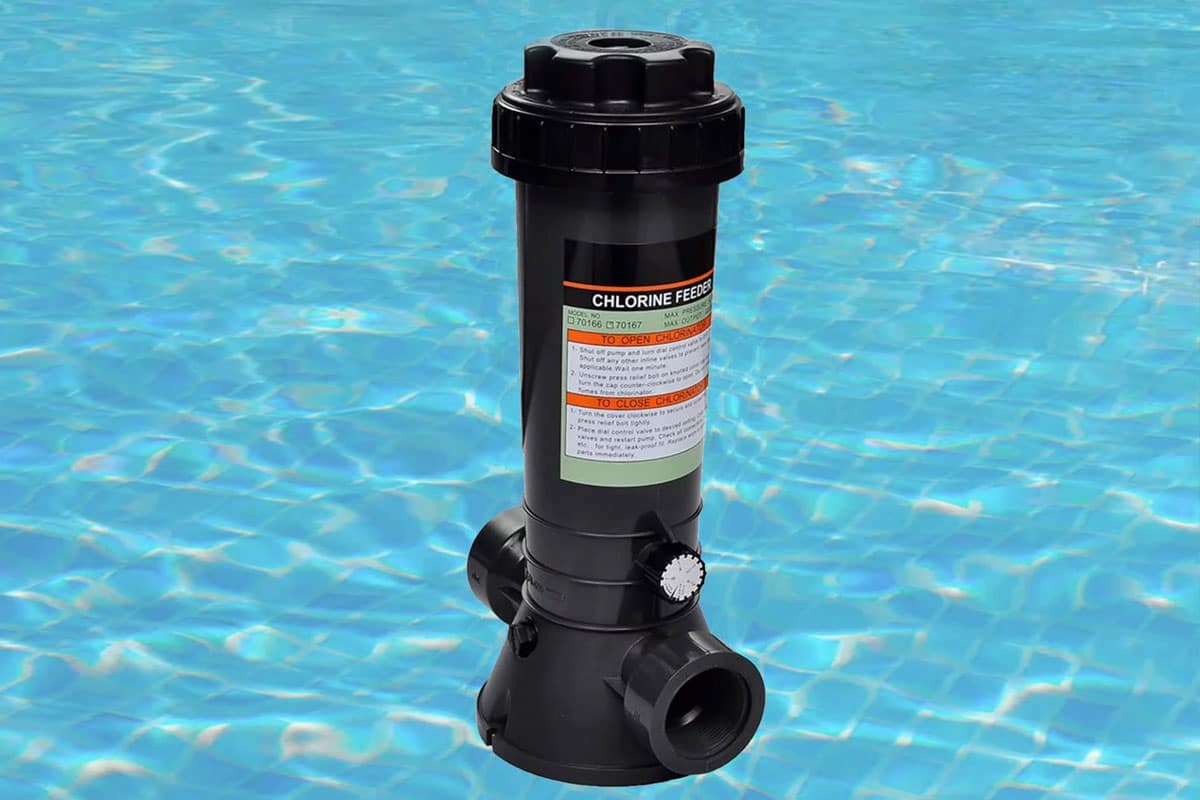When it comes to keeping your pool crystal clear and inviting, a chemical feeder is essential. Think of it as your pool’s secret weapon! Whether it’s a simple chlorinator that gradually dissolves chlorine tablets or a high-tech salt system that transforms ordinary table salt into chlorine, these feeders are game changers for pool maintenance. Some even produce ozone to supercharge your pool’s sanitation or release copper and titanium ions to battle algae.
In recent years, the market for chemical feeders has exploded, with manufacturers competing to provide the latest and greatest technology. But remember, no fancy gadget can replace the hands-on care your pool needs or the occasional splash of chlorine.
In the Austin area, the two champions of chemical feeding are the trusty in-line chlorinator and the innovative chlorine-producing salt system. Out of all the bells and whistles on the market today, these two pieces of equipment genuinely stand out. They work tirelessly to ensure a steady presence of chlorine in your pool, making it the most efficient, effective, and affordable sanitizers available.
So, how does a standard in-line chlorinator work its magic? It starts with tablets you manually place in the chlorinator tube. A handy valve controls the water flow, dictating how quickly those tablets dissolve and how much chlorine enters the pool.
Thinking of installing an in-line chlorinator? Great choice! Just remember to position it at the tail end of your equipment setup, right before the water goes back into the pool. If you’re rocking a pool heater, don’t forget to put in a corrosion-resistant check valve right behind the chlorinator—it’s like a bodyguard for your heat exchanger! And if you’re using a cleaner booster pump, make sure its suction lines are plumbed in behind that check valve. Seriously, folks—an improperly placed chlorinator can turn your wallet into a lean, mean, repair bill machine, and that’s one surprise you’d definitely rather skip!
The beauty of chlorinators is their simplicity and affordability. These mechanical marvels require minimal upkeep, like occasionally swapping out an o-ring or feeder tube, making them a no-brainer investment for pool owners.
Most of the tablets or sticks you’ll use are made from isocyanuric acid, a clever combination of chlorine and cyanuric acid. Be sure to keep an eye on your cyanuric acid levels every month and regularly drain any excess water to prevent overstabilization.
Now, let’s dive into the world of salt systems—another fantastic way to keep your pool’s chlorine levels steady without the rollercoaster ride of manual shocking. These systems work their magic through a process called electrolysis.
Electrolysis might sound complicated, but it’s a straightforward process: as saline water flows through two charged plates, the positively charged chlorine ions glide toward the negatively charged plate (cathode), while the negatively charged sodium ions swim over to the positively charged plate (anode).
Salt, composed of sodium and chloride, is dissolved in your pool water. When it passes through the salt cell, the chlorine separates from the sodium and is released as free chlorine into the pool, keeping your water sparkling clean!
While investing in a salt system can feel like a big leap, think of it as a long-term win. These systems aren’t cheap upfront, and you’ll need a licensed technician to install them properly, but the payoff can be tremendous. You’re looking at 3 to 5 years of chlorine generated from just a few bags of salt, and that means fewer trips to the store for chemicals!
Additionally, keep in mind that saline water can be corrosive. If you have metal fencing, furniture, or fixtures around your pool, you might want to brace yourself for potential rust and corrosion. But that’s not all—one crucial detail often overlooked is that saltwater can be quite destructive to unsealed coping and decking stones. When saltwater splashes out, it seeps into these stones, and as the water evaporates, the salt gets trapped inside, leading to serious damage over time—sometimes in as little as six months! To protect your investment and dodge future headaches, be sure to seal any stone surfaces around your pool before installing a salt system. This simple step can save you a world of trouble down the line, and trust us, your pool (and your wallet) will thank you!


